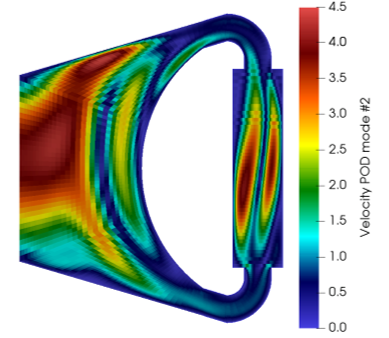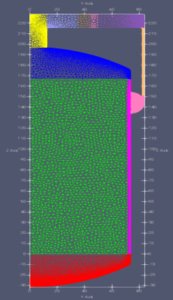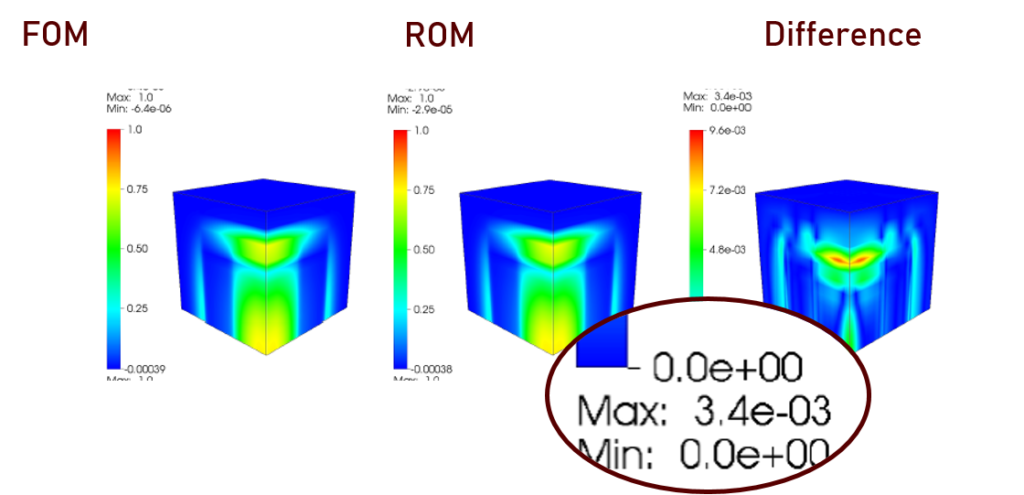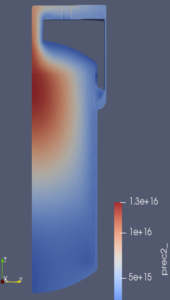The “Modeling and Simulation” research thrust can be divided into three sections:
- High Fidelity Modeling;
- Reduced-Order Models (ROM); and
- System Analysis.

spectrum MSR
High-Fidelity and Reduced-Order Simulations
Molten salt reactors have unique features related to fuel form and motion that current (e.g., LWRs) code systems cannot model:
- Delayed neutron precursor drift
- Salt (fuel/salt) compressibility
- Radiative heat transfer
- Salt freezing

Goal / Need
Understanding such phenomena is necessary for a proper design and safety assessment of MSRs
Our Approach
- High-fidelity modeling tools based on first principles (due to lack of MSR experimental data)
- Can be very greedy in CPU time + memory
- Model-order reduction to significantly speed up simulations
- Requires data produced from high-fidelity simulations to train reduced models
- Enables faster design & scoping studies and Uncertainty Quantification
Highlights
Multiphysics modeling of delayed neutron precursor drift effect: 2000-6000x speed-ups with reduced order models.


Joint Collaboration on Models
- MSRE (UC-Berkeley)
- MSFR (Texas A&M)
Researchers
High-Fidelity Models:
Reduced-Order Models:
Engagements
Oak Ridge National Laboratory
System Performance and Analysis
Motivation
- Need for thermo-physical properties compilation, synthesis and dissemination
- Need for MSR design and deployment analysis and system optimization focusing on operations/resources metrics
- Need for MSR system-level dynamics and control
- Need for licensing and 3SBD (safety, security and safeguards by design) evaluations for MSRs
Team Integration
- Data exchange – salt properties
- Common tools – Serpent, MATLAB, python
- Models – thermal and fast configurations
Goal
Integrated design development and system optimization in support of MSR deployment
Efforts
System analysis & optimization framework, UQ Analysis accounting for salt properties, system design evaluations
- Configurations and long-term U-TRU evolution and MSR metrics
- Waste management (minimization) and sustainability in fuel cycles with MSRs
- Salt recipe design algorithm accounting for solubility/phase transitions/liquidus temperature vs. reactor performance characteristics and MSR operational dynamics and stability
Accomplishments
- Compiled salt property database
- Developed an approach to synthesize salt composition thermo-physical properties
- Assembled a set of reference MSR configurations
- Developed metrics for MSR analytics
- Completed preliminary sensitivity evaluations

Researchers
Faculty:
Students:
External Collaborators
- OECD-NEA
- GIF MSR
- DOE NE, NE-KAMS
- IAEA databases.
- 2nd ed. Gen. IV Systems Handbook team
